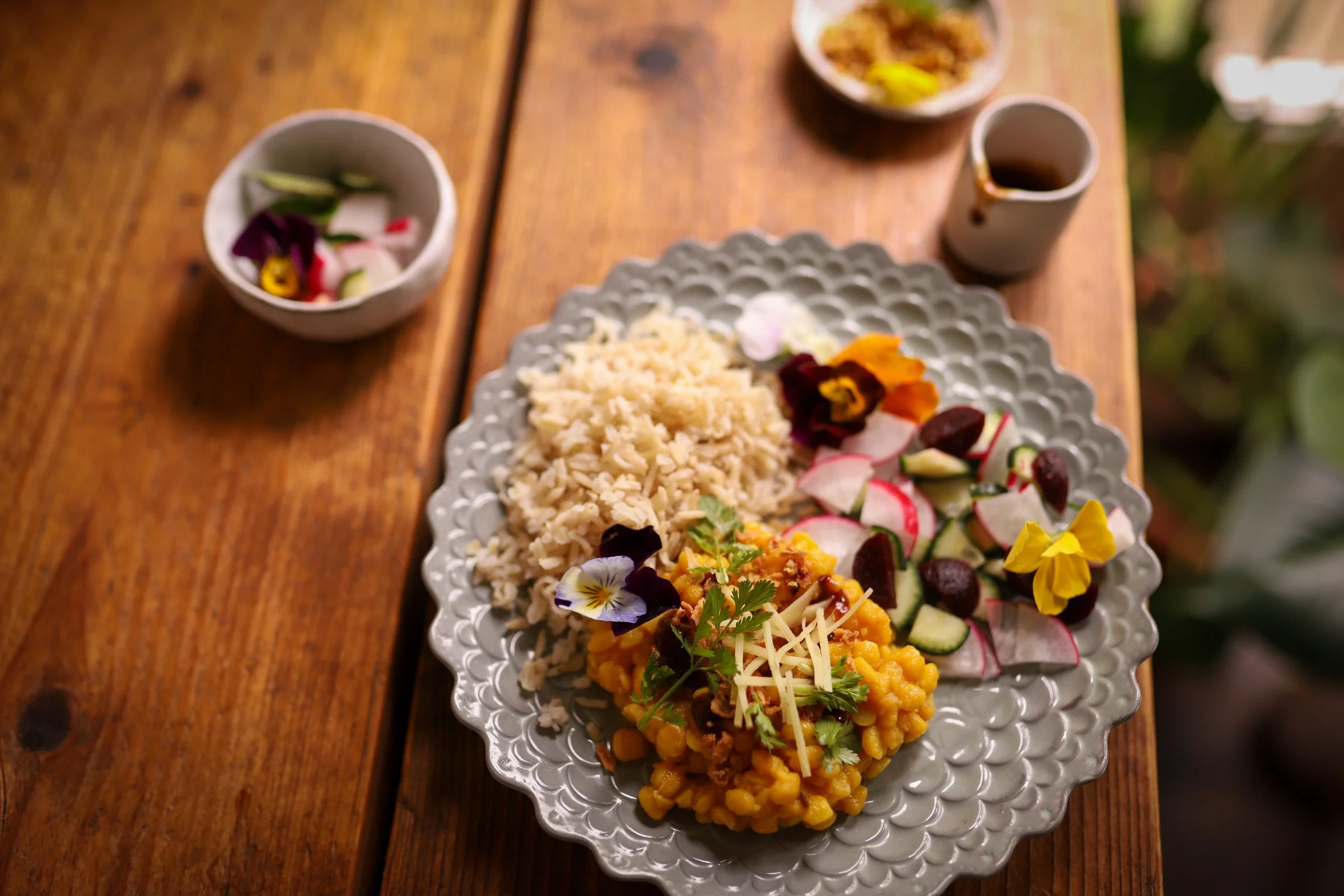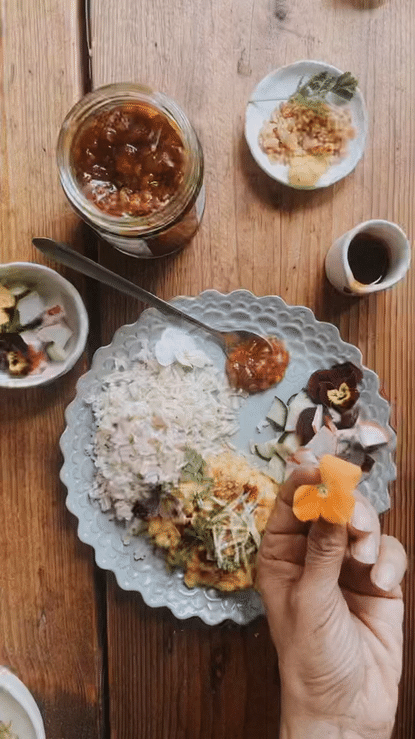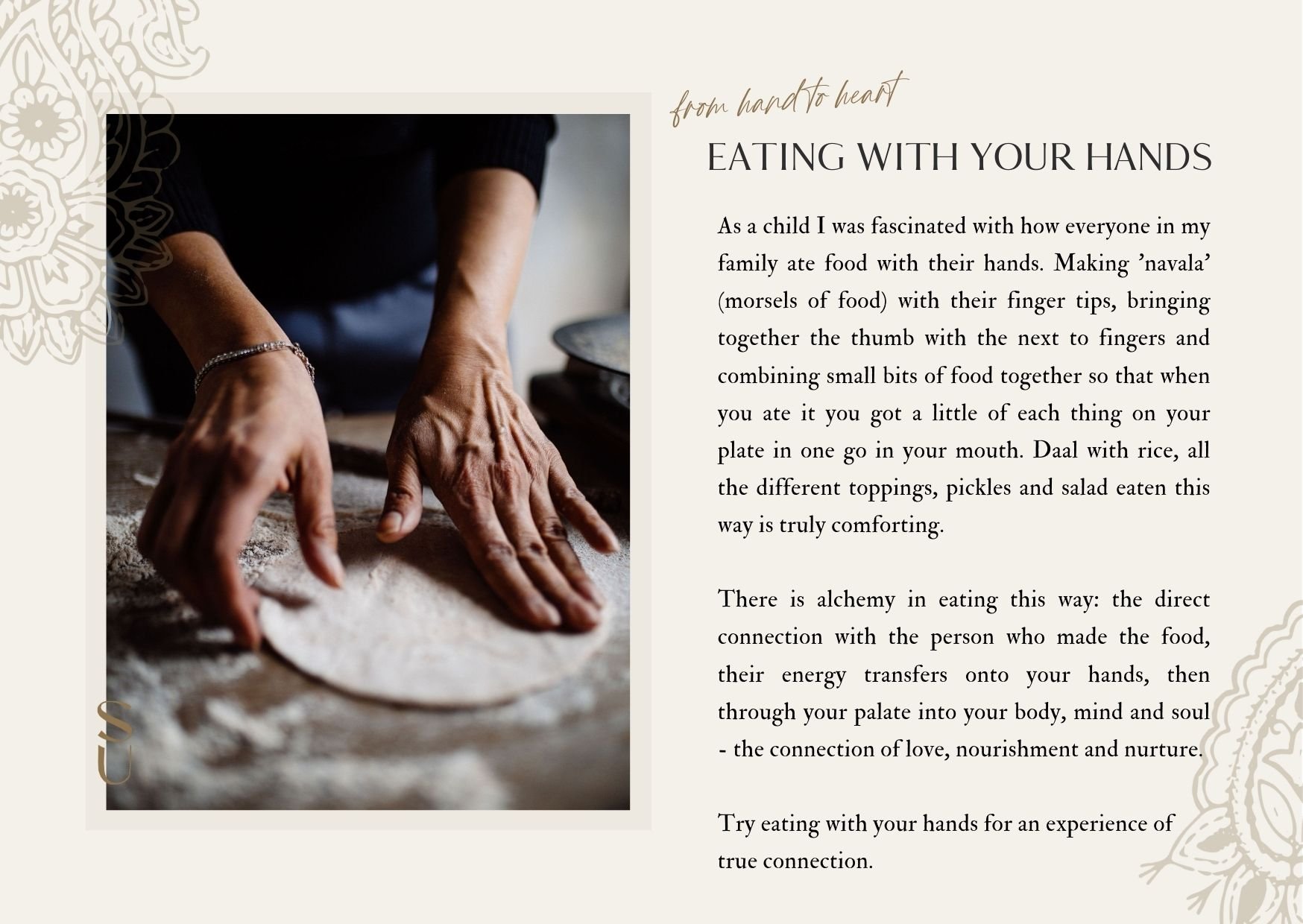Seasons
CELEBRATING TEXTURE
“Food should be a layered experience - texture in every experience of it.”
NOURISH & NURTURE.
Food isn’t just about the eating of it. It’s about the reminiscent story of spices, senses and savouring a moment. It’s about the alchemy of flavour. It’s about the people who shared their heart with you. Daal (lentils) was cooked every day in my home, we couldn’t have a meal without it, it was just as important as rice or bread. A high protein source, there are many types of lentils: red, black, yellow, brown, green and some other speciality lentils. In Pakistani cuisine we usually eat chana (split pea), chickpea, moong, maash (known also as urid), masoor (pink lentil).
The history of lentil in the Indian sub-continent is that it was found in excavations in the Indian Valley Civilization sites in Pakistan which means that consuming lentils goes back to beyond 300 BC - an ancient food that was served as a humble meal for the poor and a regal and rich version to royalty in the Mughal kitchens too.
COOKING INTUITIVELY.
This month you’re going to be trusting your instincts with the recipe below to create daal which sings with texture and flavour. Nothing is wrong, just do with my formula to create a textured daal plate and trust your senses.
Think of ways to add your spicing to the daal, boil the lentils with a stick of cinnamon, a star anise or just turmeric and a clove of garlic.
Why daal is such a blank canvas of flavour is because it sucks up anything added to it, so use that wisely.
What to add: herbs, salads, veg, fruit, I’ve used rhubarb, tamarind, apples in the past - let you imagination challenge you!
How to layer: drizzle chutney, sauce then add up layers on top a daal, anything herby goes on last.
Why to layer: explosion of flavour, texture and allows you to savour and chew, extremely important for digestion and gut health.
Whats in daal: what ever you want there to be - make a daal recipe your own.
Plate it up with colour and texture - and freeze extra.
Daal doesn’t need to be one dimensional and soft - in my home it is an explosion of taste sensations and texture.
For me, daal is such a simple meal. It’s soft, comforting with endless possibilities. This week I began my nutrition course and lentils were discussed many times. Someone mentioned how soft daal was and that there was no time to savour it as it slid down the throat, another mentioned how chewing is so essential to digestion and daal didn’t offer this. But I offered my story. One where daal is merely the canvas of a meal full of texture. Daal in my home was never mush. Infused delicately with spice, topped with tempering and further textured with crunchy onions, fried okra, embellished with tamarind, chaat masala, ginger, herbs - the plate filled with crisp salad, rice - each morsel very chewable, explosion of taste sensations and depth of experience.
Explaining this to my class I decided to cover how this experience of daal makes it more than just soft comfort food but a truly balance for the soul, the gut and the senses.
create a plate of textured daal
Ingredients
Create the daal first
150g/5oz//2⁄3 cup chana daal (split pea)
1 garlic clove
1 tsp red chilli powder
. tsp ground turmeric
1 cinnamon stick
salt, to taste
1 tbsp ghee (or any neutral oil)
5 garlic cloves, sliced
1 tsp cumin seeds
2 long dried red chillies
5–6 curry leaves (fresh if possible)
1 onion, thinly sliced, fried until brown then rested on kitchen paper
Handful of coriander (cilantro) leaves, chopped finely
1 tsp chaat masala (recipe coming)
1 tsp garam masala (recipe coming soon, but you can buy my blend here)
2 tbsp tamarind sauce (readymade is fine)
Method:
Preparation 10 minutes + overnight soaking
Cooking 30–40 minutes
Serves 5–6
To cook the daal:
Soak the chana daal in a bowl of water overnight. The next day, drain and put into a large saucepan with the garlic, red chilli powder, turmeric and cinnamon stick. Pour in 350ml/12 fl oz/1. cups water, or enough to cover the daal and bring to the boil.
Cook for 15–20minutes until the daal is soft. You are looking for a firm and not mushy daal. You may need to top up the water every now and then. Once the daal is cooked, add salt. In a small frying or tarka pan, heat the ghee over a medium heat until melted then add the sliced garlic; when it starts to brown lightly, add the cumin, dried red chillies and curry leaves and cook for about 10 seconds, or until they splutter.
Put the daal in a serving bowl then pour the tarka over. Garnish with coriander, ginger, chaat masala, garam masala and tamarind sauce.
Texture up the daal:
The texturing ingredients
Radishes, sliced
Fried browned onions
Herbs and green chilli, finely chopped
Okra or courgette, thinly sliced, dusted in chickpea flour and turmeric and red chilli powder and fried until crunchy
Pickles and chutney
Edible flowers
2.5-cm/1-inch piece ginger, peeled and cut into julienne
Cooked brown rice or wild rice
Crispy fried vermicelli
Juice of a lime with zest
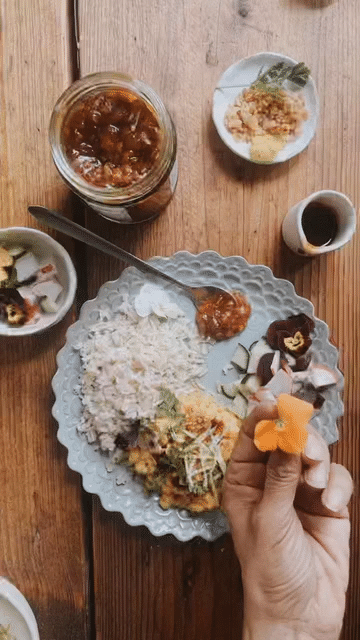
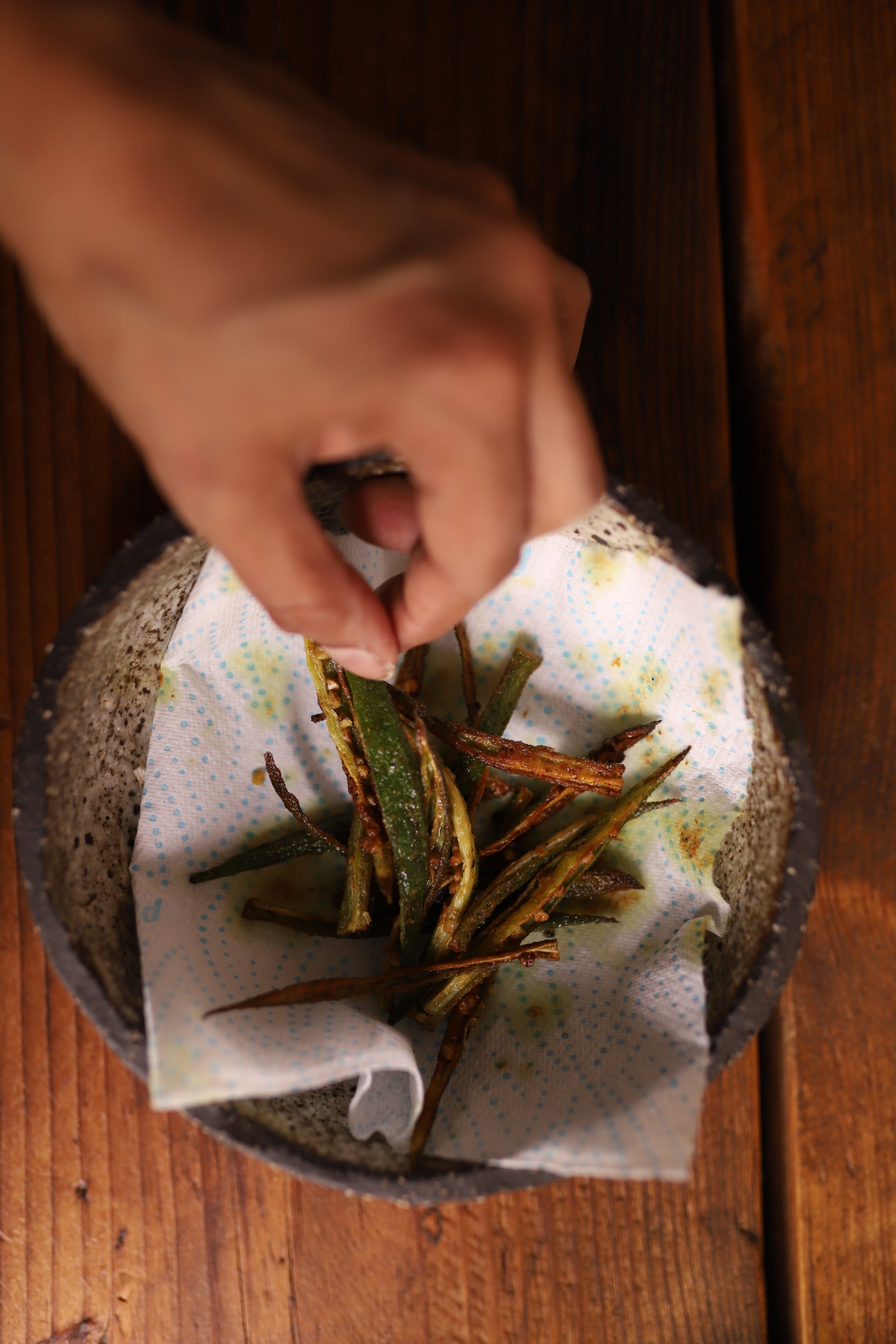
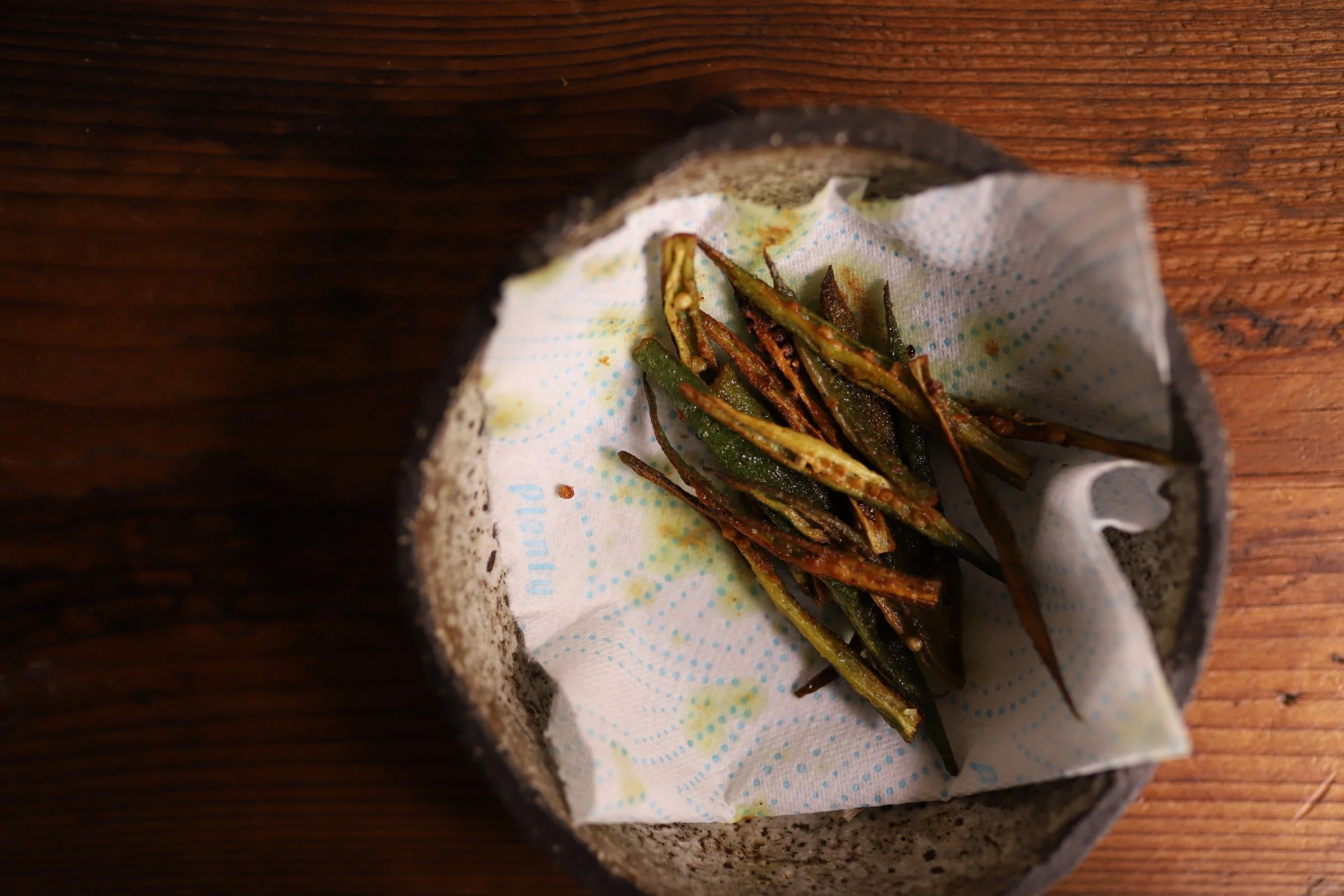
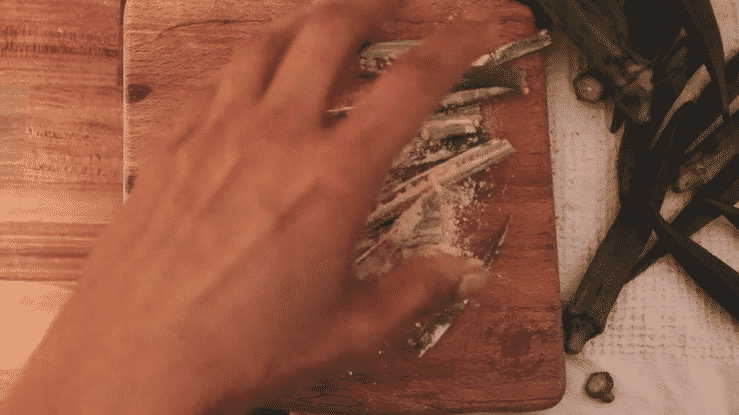
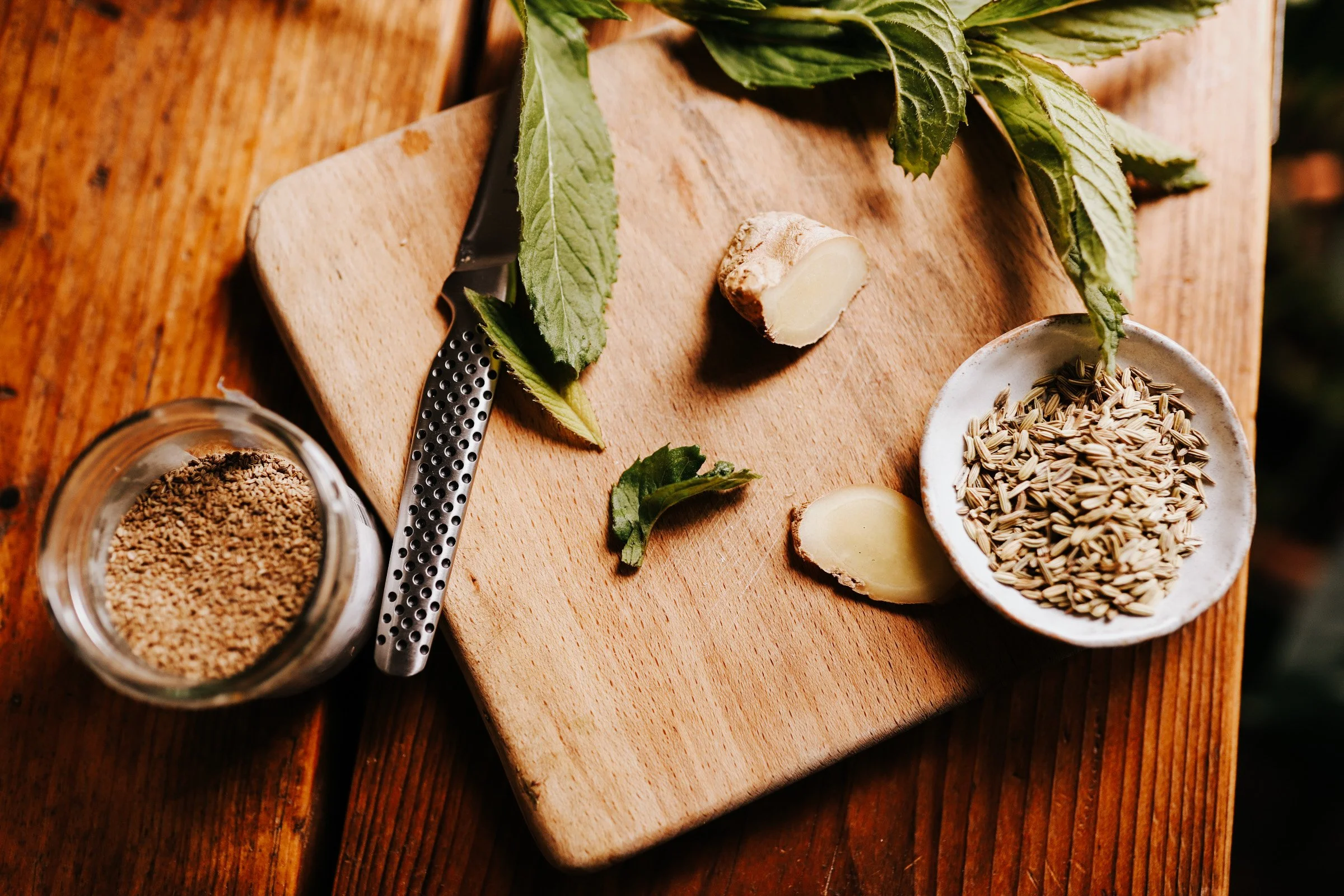
Memory postcard
A little story about the connection of eating daal with your hands.


